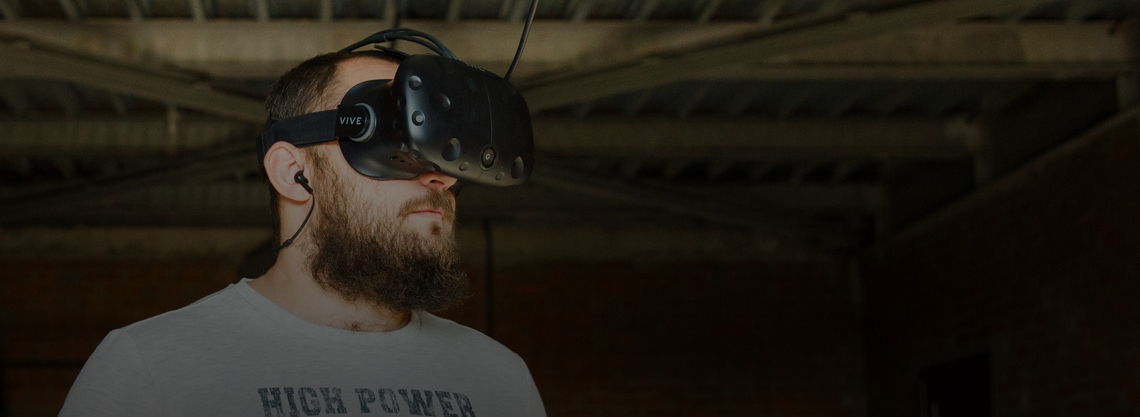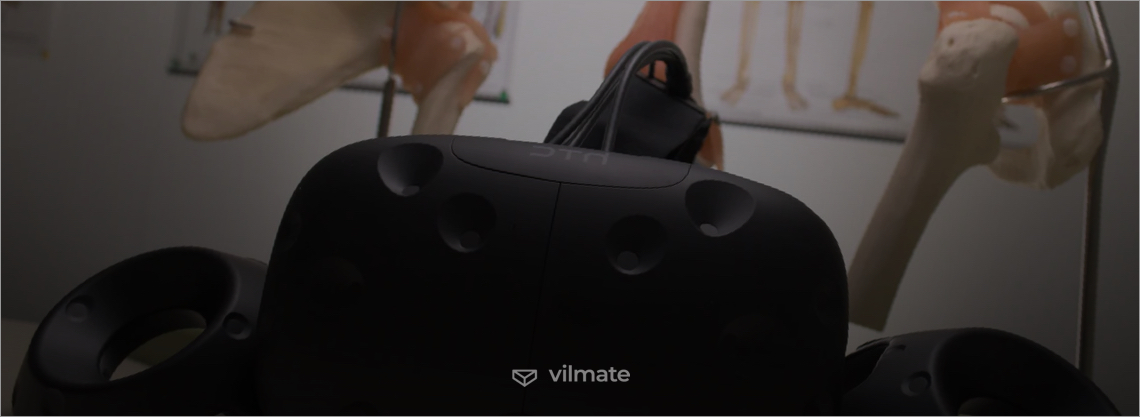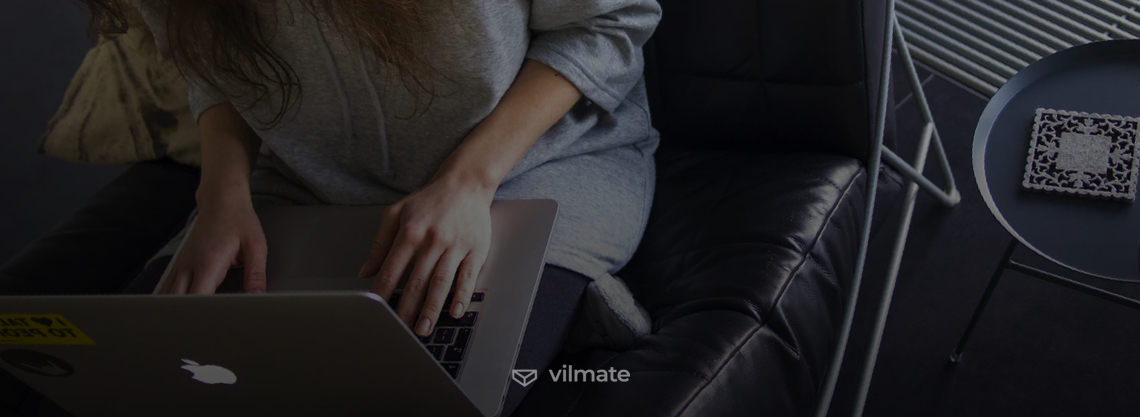For many years, people have wanted to immerse themselves in fictional worlds. Previously, people wrote and read books to immerse themselves in alternative universes. A little later, cinema and computer games appeared. But virtual reality has dramatically changed our understanding of total immersion.
The IT industry continues to evolve. Concepts such as virtual reality and augmented reality are known all over the world. And there are many technologies that allow us to change the world around us.
You don't need AR/VR technologies to read this article, but we hope that this article will immerse you in the world of extended reality. Here, we will consider the nuances of different types of technologies, and think about the development prospects.
Virtual reality vs. Augmented reality vs. Mixed reality
The difference between virtual reality and augmented reality is very simple. Virtual reality takes you to an alternate digital world. Augmented reality allows you to bring virtual objects into reality.
Mixed reality allows you to attach virtual objects to reality.
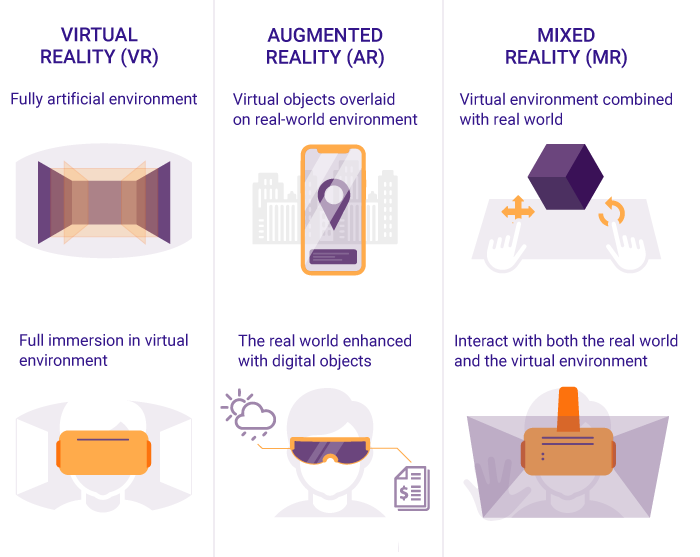
Let's discuss each type of augmented reality in greater detail.
Virtual reality
The concept of virtual reality implies the immersion of human consciousness in a virtual world created by a computer. Virtual reality affects vision and hearing, giving the impression of being transported to another space. You will hear digital sounds and see digital images around you, and you will be able to navigate the new world using standard devices. At the same time, the real world, as a rule, remains hidden.
To immerse yourself in virtual reality, you will need special VR glasses. Most of the existing devices (Oculus Rift, Playstation VR) connect directly to a computer or game console. However, there are also independent devices – for example, Google Cardboard. Generally, standalone VR headsets are compatible with smartphones.

The user experience can be non-immersive, semi-immersive, or immersive. The difference between the types of VR experience lies in the completeness of the user's immersion in the environment. Non-immersive VR involves only visual and audio components. Immersive VR allows users to influence the virtual world, including via tactile sensations.
You can use special gloves or even suits, treadmills, or bikes. In general, a complete movement into the virtual space.
Another exciting example of VR is immersive videos on YouTube. 360-degree mode allows the user to view everything through VR glasses and hear sounds from a particular direction.
The spheres of virtual reality are constantly expanding, and a notable rise began after 2019. Let's look at the most promising VR industries.
- Entertainment and games
- Old popular projects adapted for VR (TES 5: Skyrim VR, Doom VFR, LA Noir VR, etc.).
- Exclusive games can be played only in VR (Superhot VR, Beat Saber, Iron Man VR, and Star Trek: Bridge Crew).
- Education
- Take a trip inside the human brain, study its parts, and understand what actions they’re responsible for.
- Walk around Stonehenge, the Titanic, the International Space Station, and other famous landmarks.
- Visit the Acropolis of Ancient Rome to feel the atmosphere of the ancient world.
- Real estate
- Healthcare
- Marketing
Of course, VR games are the first thing that comes to mind when we mention virtual reality. Almost everyone has heard about the many video games you can play using headsets. The VR environment lets you completely immerse yourself in the virtual space and move your consciousness into a fictional universe.
The most famous and popular VR game is Hilfe Life: Alyx. In 2020, the new part of Hilfe Life made a lot of users buy headsets, significantly affecting the market.
One of the most stunning examples of an immersive experience for users was the ability to draw on glass using a marker. However, the game has many attractive solutions that allow you to have a new gaming experience.
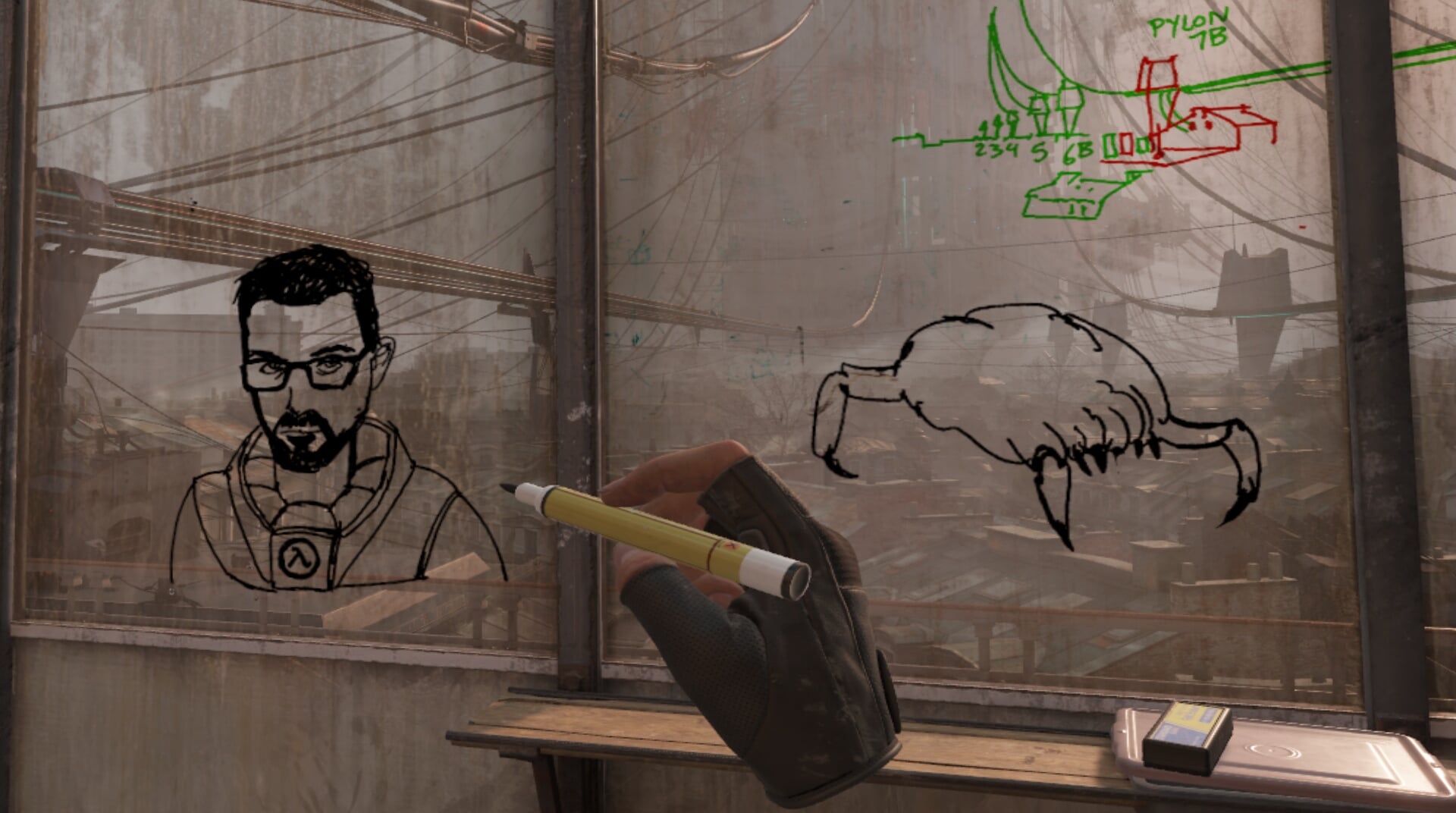
Games for VR headsets can be divided into two types:
Every year, there are more and more projects, and we can safely say that the VR entertainment industry won’t die for a long time.
For many years, scientists in the field of pedagogy have been exploring the gamification of learning processes. Should education be fun? This point is still debatable. Should education be visual? Definitely yes.
The VR environment is the best place to visualize the many environments. The Unimersiv platform is a great use case for VR. With this platform, you can:
The best educational institutions have been using VR for a long time. And Unimersiv is just a drop in a sea of possibilities. For example, the Immersive VR education company provides projects for studying different events. The 1943 Berlin Blitz in 360˚ project allows you to feel like a participant in an air raid on Nazi Germany so that students can experience a significant historical event.
Another well-known project is Google Arts and Culture. Using the platform, teachers can introduce students to works of art and museum exhibits. For example, Arts and Culture is an excellent opportunity to visit Versailles in VR.
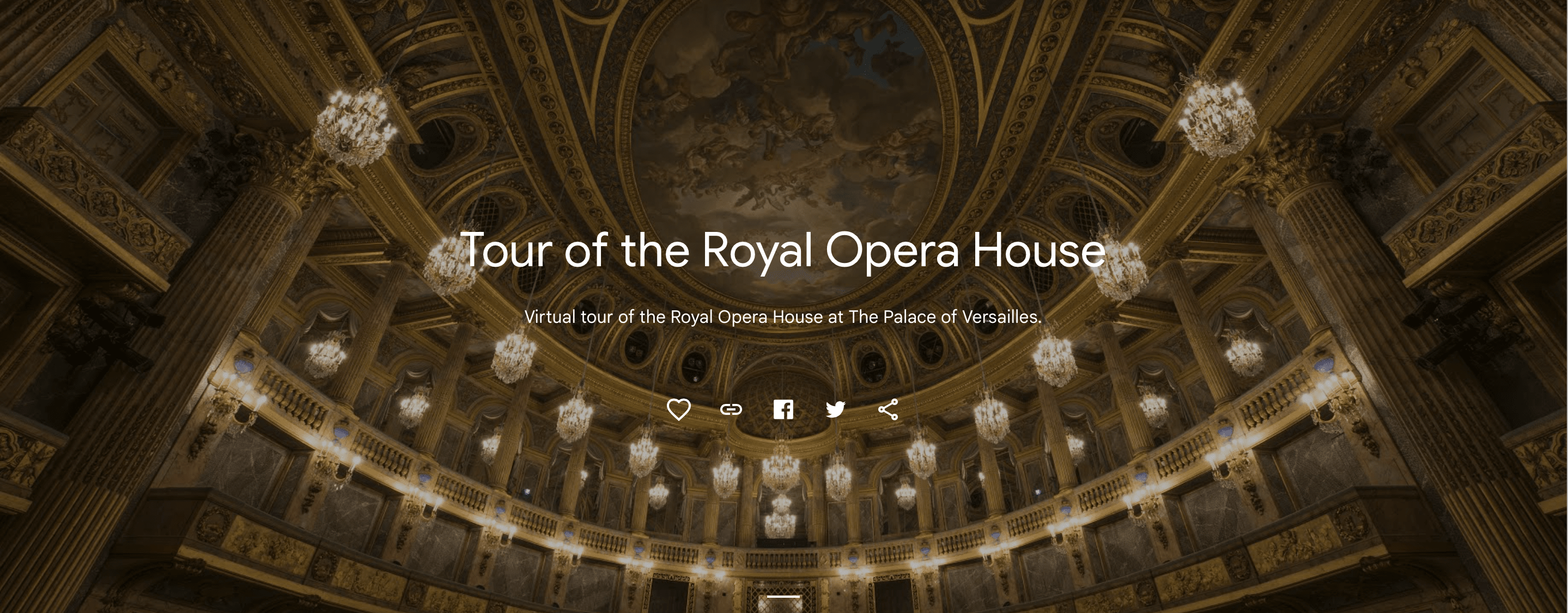
Language learning can also become more immersive. For example, Bernard Marr writes in his book "Augmented Reality in Practice" that communicating in a VR environment with other people in a foreign language contributes to excellent immersive learning. It’s a VR space that allows you to immerse a person in unusual situations where language skills will develop more actively.
In the real estate industry, virtual reality has become especially popular. If earlier real estate agents could only provide clients with photos, now they can conduct virtual tours of objects. Virtual tours save time and effort for both the potential buyer and the realtor. For example, Matterport already uses 360-degree demonstrations.
VR demos are the perfect solution for buying and selling real estate. Photographs never convey the real properties of an object in the way that total immersion will.
In addition, everyone has long known that an empty house will attract fewer customers than a space with an attractive design. Ready-made design solutions help the user imagine how his new home will look. Therefore, real estate agents can make homes more attractive by arranging furniture and repainting walls in VR space.
Thus, with the help of virtual reality, even houses that haven’t yet been built can be sold. After all, the buyer can see how the object will look in advance.
In healthcare, VR performs several functions: educational and therapeutic.
For example, the Medical Realities platform invites future surgeons to study anatomical atlases, participate in virtual operations, and understand clients' needs.
In addition, VR platforms help people treat some mental disorders. Cyberpsychology enables one to undergo therapy for anorexia, anxiety, and PTSD.
Virtual reality is an excellent tool for visual communication between a doctor and a patient. Also, virtual space can provide a new experience for people with disabilities.
At the moment, virtual reality is still considered something new and unusual. Therefore, you can safely use VR in marketing. The online shopping experience will sparkle with new colors if the buyer can walk through virtual stores instead of selecting the desired products with the mouse. Virtual reality will increase impulsive purchases and attract customers with unusualness.
IKEA was one of the first to create its own VR space. The company lets people into a virtual kitchen to interact with objects.
We have discussed only the main areas where people are actively using virtual reality. However, you can introduce new opportunities in your field to become the first. It's time to exit virtual reality and return to the real world. And to avoid being very dull, we can supplement it with new digital details.
Augmented reality
Augmented reality has been a fashion trend in recent years. AR allows you to overlay digital images in the real world. For many people, augmented reality's first acquaintance occurred in the 80s, thanks to the Terminator movie.
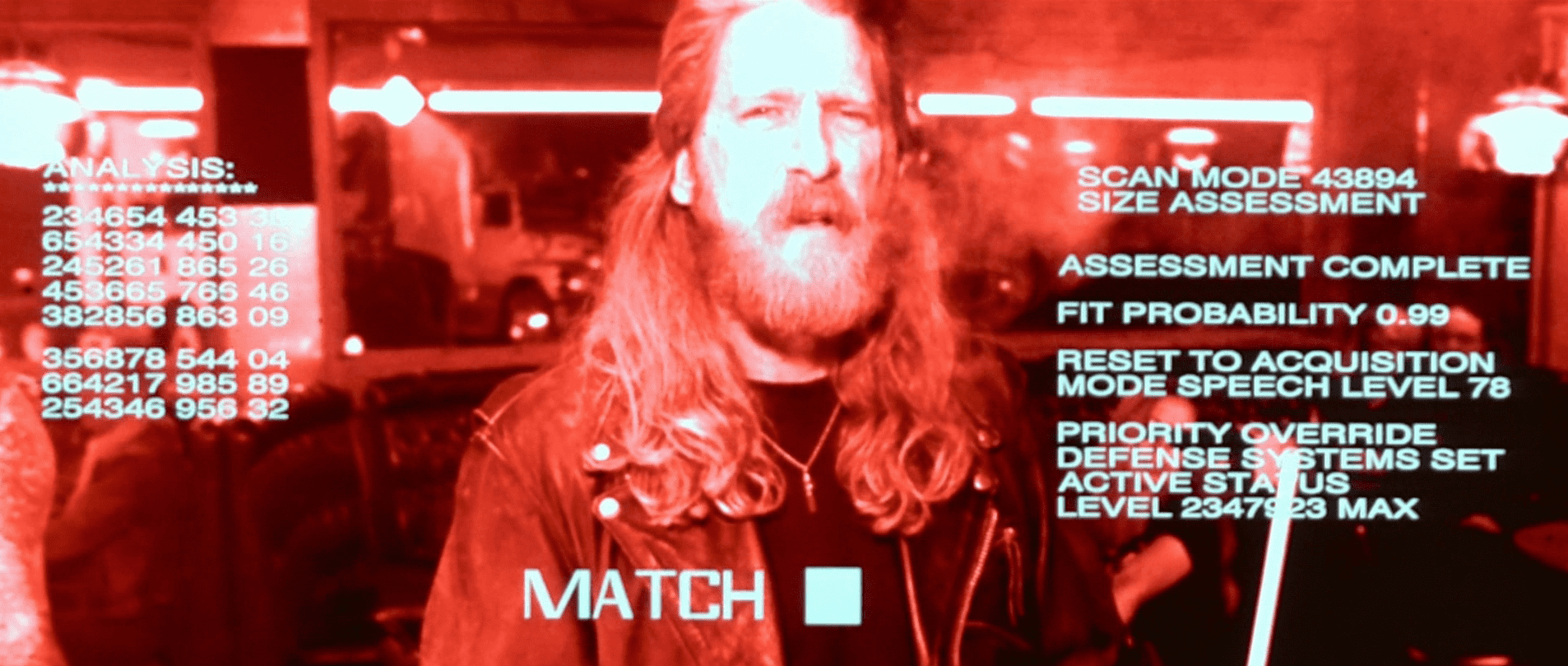
In general, digital objects that are superimposed on the real world can be anything: text, an image, or interactive data. Augmented reality doesn’t hide the real world from us but tries to embellish it.
You can obtain an augmented reality experience through the following:
- Portable devices
- Smart glasses
Augmented reality is more accessible than virtual reality. You can use your smartphone or tablet to get an AR experience. Mobile apps use the phone's camera to capture real-world images. This picture is then overlaid with real-time digital graphics.
Perhaps the most notorious augmented reality app has been Pokemon Go. The game allows you to see a Pokémon in real-world space on your smartphone's screen.
Smart glasses are still a developing concept. However, working models already exist. And insiders have been predicting smart glasses from Apple for the third year. However, the company from Cupertino isn’t yet ready to make another revolution.
However, Apple has already done a lot to develop augmented reality. For example, the company has created the world's largest AR application platform and makes all its new devices with this technology in mind. Also in the latest Pro devices, Apple is introducing a LiDAR sensor that allows you to scan the surrounding space, creating a virtual copy of reality.
Augmented reality (AR) headsets, unlike VR headsets, don’t hide the world around them, but simply add digital objects to it.
One of the most successful projects is Glass. The company introduced smart glasses designed to help people in their work, freeing their hands.
Before we start discussing the applications of AR, let's talk about another exciting technology. Xiaomi has released a mini printer with instant printing capability. Images printed on paper support augmented reality. And this means that you can print not only a photo but also a small GIF.
The photo looks normal, but if you look at it through your smartphone camera, it will start moving on the screen, showing a small video clip. It's like the Harry Potter universe, but with its own nuances.
Now it's time to answer the question: Why do we need augmented reality? Is it just for entertainment?
AR application areas
- Marketing
- AR provides virtual fittings. The user doesn’t have to go to the store to see how the glasses will look on his face. Also, the application can help a person find the size of clothes that suit him. The client can see how the new sofa will look in his room. By the way, IKEA has used this move for a long time.
- AR tells the customer more about the product. As a rule, there is little space on street posters or paper brochures. Augmented reality will help place all the necessary information. Here we can give an example of Net-A-Porter. The company has been experimenting with AR for a long time and put posters on the streets of large cities that gave out more information when pointing to the smartphone camera. It was also possible to view the advertised objects in 360 degrees.
- AR improves targeting. People love gamification and interactivity. Therefore, you can attract more attention. In addition, after studying users' needs, you can show different objects to different target audiences. AR can help advertising become more targeted and hyperlocal.
- Manufacturing
- Navigation
Speaking of virtual reality, we have already mentioned marketing. But, since VR technologies require unique and expensive devices, this area is far from being in the first place. As for AR, advertising and marketing are one of the main areas of application. All customers need is a smartphone with a camera, and many target audiences have it.
AR advertising entices users with interactivity, novelty, and variety. In addition, augmented reality helps people make a choice and decide to buy:
There are many successful cases of augmented reality applications. For example, Sephora Virtual Artist allows customers to see how a beauty product would look on their faces. Sephora customers easily match the color of lipstick and other cosmetics.
We already mentioned IKEA and their popular furniture placement app. PepsiCo also used AR in outdoor advertising. Why isn't AR advertising everywhere yet? Well, some difficulties prevent the technology from becoming ubiquitous.
General Electric and Boeing have already begun using augmented reality in their manufacturing processes. Many companies have realized that AR can reduce human error and save a lot of time.
Augmented reality can give the necessary hints to employees to make the process more efficient. You can learn more about the possibilities of augmented reality in production on the Upskill platform.
Augmented reality can insert pointers and hints related to real objects. Thus, it will be easy for the user to pave the way and find the right place. In addition, you can use the navigation option as part of your marketing. For example, an application can show users the nearest cafes, gas stations, or other establishments on the smartphone screen.
Of course, these aren’t all areas of application for augmented reality. It all depends on your imagination. Many companies are finding their unique ways to use AR. Just imagine how handy glasses are that instantly translate text on signs when traveling abroad. Google has already presented a prototype of such a device.
Or think about how convenient it is to receive AR instructions and tips when repairing a complex device. All this awaits us soon. And even more.
Challenges in implementing AR
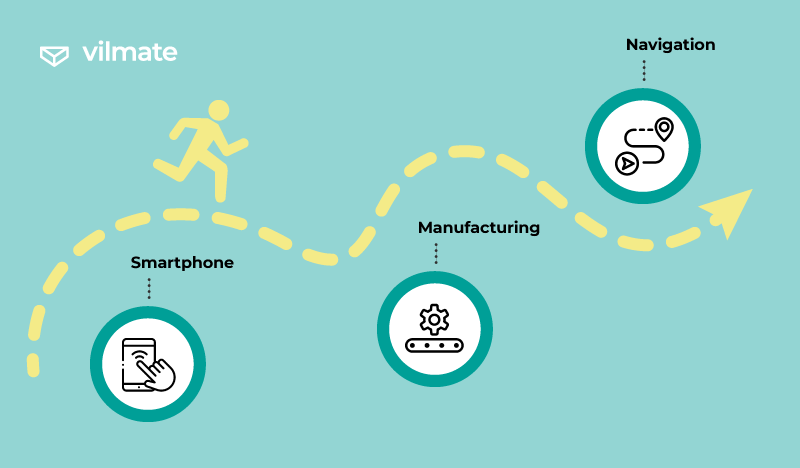
- Mobile applications.Mobile applications.Augmented reality works through mobile applications created for each specific case. It’s a first problem: the client must find the application, want to install it, and then leave it on the smartphone. Therefore, many users refuse to experience augmented reality. In addition, AR is a popular technology to use in app development, so augmented reality applications will have to compete for space in the memory of customers' smartphones. However, experts are trying to solve this problem. For example, Blippar is working on a new augmented reality format that won’t require the installation of applications. Therefore, the mass distribution of AR is waiting for us very soon.
- Smartphone capabilities. Unfortunately, not all smartphones can work with augmented reality. To work fast with AR, you need a powerful processor. Apple has taken care of supporting the technology for their devices, but there are still many budget devices worldwide. Therefore, when creating advertising with AR technology, the company has to focus only on an audience with advanced phones.
- Development cost. To run augmented reality ads, developers need to work on them. Specialist services aren’t always cheap, and the process of creating good AR ads isn’t always fast. However, there are dedicated AR software development kits. Therefore, the costs will be significantly lower soon.
And if everything is already clear with AR and VR, it remains to deal with the third option: mixed reality (MR).
Mixed reality
Mixed or hybrid reality links digital content to the real world. We can divide MR into two types:
- Virtual objects interact with reality, making the MR experience more interactive. Imagine that you have a virtual car racing game. Mixed reality allows a virtual car that doesn't exist in reality to drive around your house, crashing into the sofa and bumping into the walls. And you can manage this process. Have you imagined? As you might have guessed, such a game exists. It’s Hot Wheels Rift Rally.
- You are changing reality with MR technology. For example, you look through your smartphone's camera at the table in your room. With MR, you can paint it green or orange. Then you can resize and remove the table from the interior. At the same time, a real table in reality, of course, won’t go anywhere.
We hope you get the principle of hybrid reality. To interact with it, you can use several types of devices:
- Holographic devices. It’s a headset with translucent glasses that don’t entirely hide the real world. Then virtual objects will be created using holograms. Microsoft HoloLens 2 works that way.
- Immersive headset. In an immersion headset, the outside world is completely hidden from you behind non-transparent displays. Does it look like VR? Yes, but you can still see the image of the real world with the help of cameras that broadcast the picture online on displays.
Mixed reality is relevant in areas where AR and VR are appropriate. MR makes the user experience less "unreal" than VR and more progressive and interactive than AR. But what can we expect from technology next?
Extended reality perspectives
We have already discussed the areas where extended reality will be promising. Many companies use AR, VR, and MR to unlock new perspectives and marketing. And further, judging by experts' forecasts, augmented reality expects constant growth.
For example, GlobeNewswire predicts AR technology to grow at a steady 40.5% since 2022. At this rate, the augmented reality market will reach $461.25 billion in 2030.
If in 2020 we observed 70 million VR users, then by 2023, the number has grown to 97.1 million.
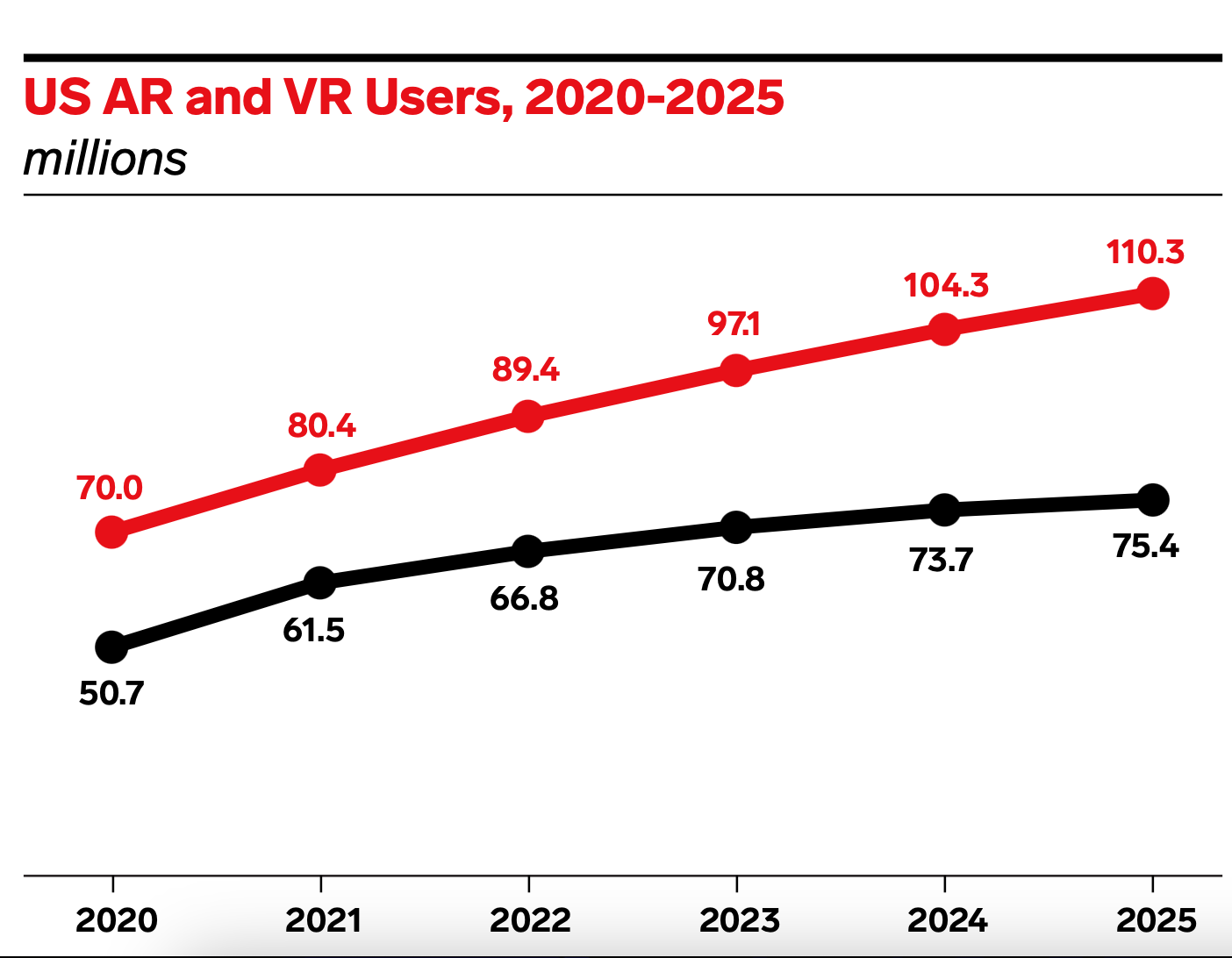
By the way, the COVID-19 pandemic has played a significant role in technology development. Why?
Due to quarantine, many employees had to work remotely. And as we have already found out, learning, communication, and even complex work are much easier to do with augmented reality. Therefore, the demand for VR headsets and AR applications has grown significantly. Where there is demand, there is supply.
Conclusion
In general, we consider augmented reality to be a promising direction. VR, AR, and MR are the niches that still don’t have too much competition. So far, new technologies surprise users, increase reach, and gain user trust in the brand.
We are confident that every year, there will be more and more devices that support new technologies. Eventually, insider predictions will come true, and Apple can release its AR glasses someday. However, there are already enough VR helmets and AR devices on the market.
We may have full-fledged costumes that can convey tactile sensations in the future. So far, it’s difficult to say what kind of breakthrough the developers will present. But one thing is clear: the development of augmented reality will undoubtedly continue.
Therefore, if you want to implement augmented reality technologies in your project or product, you can safely contact Vilmate. We are happy to help you create any kind of software with support for the latest technologies. As they say, VR always there for you :)

